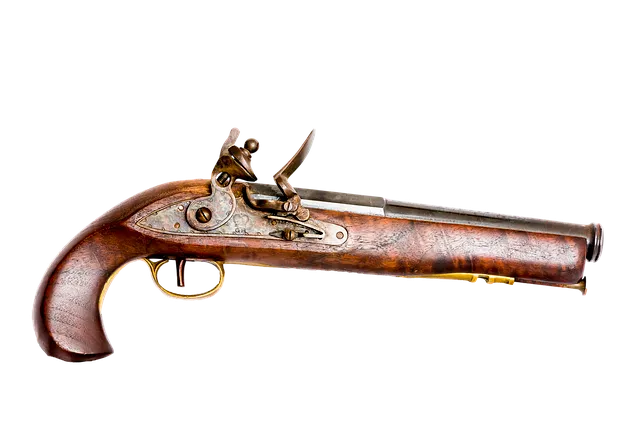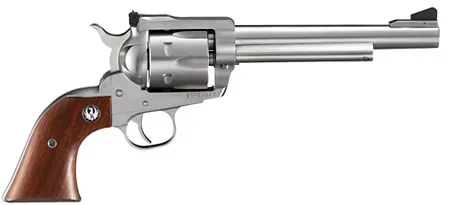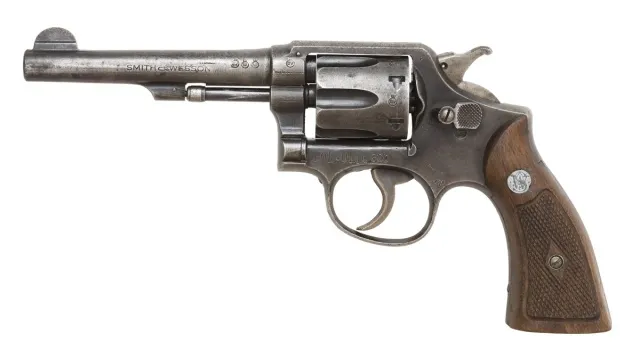In my previous posts exploring preparedness and emergency kit construction, I have touched on Altoids tin survival kits, rebuilding my tackle box, the C's of Survival, starting a go bag, and keeping preparedness camouflaged.
The time has come to discuss firearms as a part of survival kit creation, and I would like to focus on handguns today. A pistol can easily be stored out of sight inside a backpack, and most can be worn in a variety of ways while leaving your hands free. A rifle or shotgun is superior for hunting or self-defense most of the time, but they are cumbersome and not very discreet. Thus, we consider the handgun.
Initial Considerations
Think about your situation. Are you in an urban or rural environment? What preparation applies for home and on the road? What is your budget? How much training and practice have you had? What legal hurdles and social stigmas stand in your way?
Black Powder
A lot of armchair survivalists seem to gravitate toward black powder firearms. After all, it's old technology. Not much can go wrong with the gun. You can theoretically make your own gunpowder, and many people still cast their own bullets from raw lead. Flint is a natural stone, and musket caps can be bought in bulk for long-term storage.

Image credit
There are downsides, of course. Black powder fouling is nasty stuff. Gunsmoke in addition to the report from the shot is a huge "I am here" signal. Follow-up shots are not usually an option unless you have a cap-and-ball revolver. Manufacturing powder is a lot more complicated and dangerous than it at first appears.
However, there may also be legal loopholes to exploit. Antique firearms and modern reproductions can be easier to obtain, with little if any red tape in the US. Calibers abound, but this is not a topic where I have much real knowledge. My focus in this post is instead cartridge-fed revolvers.
Single-Action Revolvers
Shortly after the development of revolvers, self-contained metallic cartridges were invented and applied to handguns using the same mechanism. These early revolvers still required manually cocking the hammer in order to fire a new shot. The trigger performed the single action of releasing the hammer. Of course, these were just "revolvers" until the development of double-action revolvers later on.

Pros: These are typically built with simple, reliable mechanisms. Modern single-action revolvers like the Ruger Blackhawk (pictured above) have very strong frames, and they are a hoot to shoot.
Cons: Single-action revolvers are a bit cumbersome to use compared to more modern wheelguns, to say nothing of magazine-fed semi-automatics. Those designed to resemble the classic Colt SAA "Peacemaker" have a rather tedious reloading process.
All told, these are certainly viable, but not ideal options. Fine for hunting, not so great against two- or four-legged predators anymore. But they'll do the job, especially if using any modern caliber.
Double-Action Revolvers
Manually cocking the hammer for every shot is a bother. What if a linkage were added so pulling the trigger could also cock the hammer? This obvious improvement occurred to many inventors, and a few implemented it quite well.
The double-action revolver was developed before the end of the black powder era, so cartridges still used today like the .38 Smith & Wesson Special have a longer case than is needed for the modern smokeless propellants that were swiftly substituted.

Image credit
The Smith & Wesson revolver pictured above is from 1899, but an improved version is still manufactured today. A lot of people I respect speak highly of the Manhurin MR73 as an improvement over the already-excellent Smith & Wesson design if you have money to burn. Ruger, Colt, and other US manufacturers all make excellent models. I am less familiar with options outside the US, so I ask for your input below.
Ammunition
There aren't very many widely-used calibers. .22 Long Rifle, the aforementioned .38 Special, .357 Magnum, and .44 Magnum are the dominant options.
.22 Long Rifle
Pros: Ammunition is light and plentiful. Recoil is mild.
Cons: Comparatively low energy on impact.
Uses: Ideal for small game. Not the best for self-defense, but no one wants to get shot by even a small bullet.
.38 Special
Pros: Widely available, proven round with a long history in police, military, and competitive environments.
Cons: Overshadowed by both its big brother the .357 Magnum and the various rounds designed from the start with smokeless powder for self-loading handguns
Uses: Probably not overkill for small game, definitely on the low end for deer or self-defense, but worth consideration.
.357 Magnum
Pros: One of the most capable revolver rounds in wide use.
Cons: This one starts to kick a bit
Uses: Self-defense, hunting
Note: externally, this differs from .38 Special in length only. A .357 can fire .38 special ammunition without issue, but the reverse is not true at all. A .357 round produces far higher chamber pressures. The length is designed specifically to prevent ammo compatibility in the wrong direction, but I have seen an old .38 Special gun that would fit a .357. Pay attention to the markings on the gun!
.44 Magnum
Pros: Power. While Dirty Harry's line was not entirely true even when he said it, this is still one of the most powerful handgun rounds available, and definitely the most popular in its class.
Cons: This kicks a fair bit. It can be downright uncomfortable in some loadings.
Uses: If you live in bear country, this is probably your best bet. It's also a superb round for deer hunting. There is also an older, milder .44 Special round that can be used instead of the full power magnum just like .38 Special can be fired from a.357.
My choice
Revolvers don't have a lot that can go wrong. They can fail, but most failures can be avoided with proper training. A double-action revolver is a perfectly viable option for SHTF scenarios. The biggest problem I have seen is cartridges jamming the ejection system if the ejector isn't slapped with a little vigor.
If you choose a revolver, there are many options in caliber, cylinder capacity, frame size, barrel length, grip shape, and so forth. As with any firearm, there are always compromises. A snub-nose J-frame Smith & Wesson is easy to conceal, but the short sight radius makes good marksmanship difficult. A massive N-frame magnum revolver with a long barrel is easier to shoot well, but it is heavy and bulky.
There are also oddball options like the Chiappa Rhino with innovative designs but very quirky mechanical compromises. Having shot one, I can say two things:
- It is a wonderful target pistol.
- I would need a lot of practice familiarizing myself with its peculiar manual of arms before taking it as a survival gun.
With all of that in mind, and with the note that I would want to spend much more range time before making a final decision, I think my ideal choice that remains feasible for my budget would be a Ruger GP100 in stainless steel with a 4.2" barrel. I reserve the right to change my mind, though, and I plan to add another installment covering semi-automatic handguns eventually. Will a self-loader beat out the wheelgun? Wait and see!
In the mean time, feel free to comment here with your own experience and opinions on the matter.
Addendum
After initially posting this, I thought of two specific revolvers I specifically do not recommend.
Taurus Judge
On one hand, this revolver offers unmatched versatility by offering the option of .45 Colt (a.k.a. "Long Colt"), .410 shotshells, and in some versions, the even more potent .454 Casull. Neat! On the other hand, it's not an especially good .45, and I haven't been very impressed at what I have seen of its performance using shotshells. It's also a chunky thing. The cylinder is massive. The gun is heavy. The ergonomics are nice, but I can't recommend it. Feel free to try it at a local range, though.
Nagant 1895
The other gun has only one redeeming feature: the ammo is so odd, you will probably find it's the last stuff on the shelf at major sporting goods stores next time there is a run on supplies. It is also notable for the ability to use a silencer, but the gas sealing system is why the gun is so bad.
This pistol is a double-action revolver with a loading gate like a single action instead of a swing-out cylinder. When the trigger is pulled, a mechanism presses the entire cylinder forward against spring pressure. This results in a single-action trigger worse than any double-action trigger I have ever experienced, and double-action trigger press is almost impossibly heavy for any accuracy whatsoever.
If "any gun is better than no gun," this Nagant really tests that assertion.